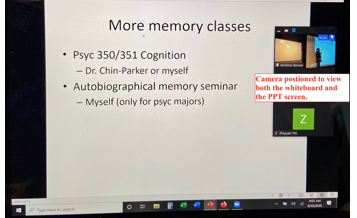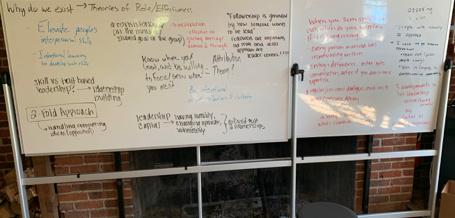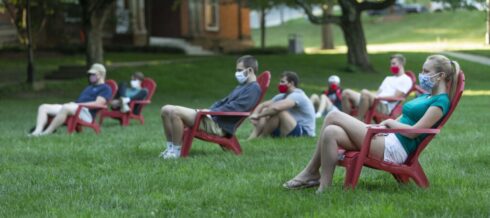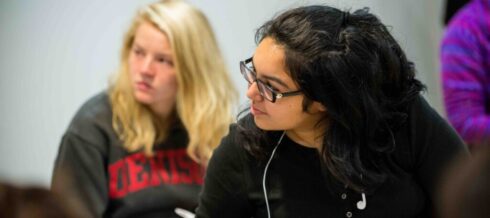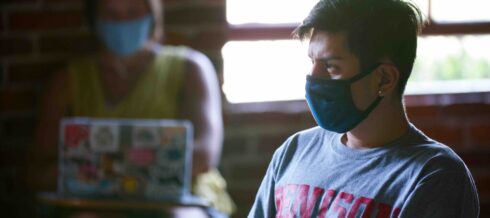Making my voice heard (to my remote students) – Kristina Steiner, Psychology
The problem
This fall I was assigned to a very large teaching space. This was great for social-distancing but created issues for my remote students. With one external mic in this large space, I was afraid my remote students would not be able to hear me. In addition to sound, I was also concerned about presentation.

